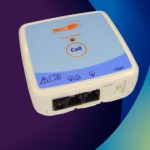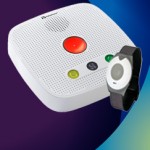Considerations For Living With Epilepsy

Living with epilepsy involves a variety of considerations to
ensure safety, manage symptoms, and maintain a good quality of life. Here are
some key factors to think about:
1. Medical Management
Medication Adherence: Take anti-seizure medications as
prescribed and consistently. Missing doses can increase the risk of seizures.
Regular Medical Check-ups: Schedule regular visits with a
neurologist to monitor the condition, adjust medication, and discuss any side
effects or new symptoms.
Seizure Triggers: Identify and avoid known triggers, such as
lack of sleep, stress, alcohol, flashing lights, or specific foods.
2. Safety Precautions
Seizure Safety Plan: Develop a plan that includes what to do
during a seizure, emergency contacts, and any necessary medical information.
Make sure family, friends, and coworkers are aware of this plan.
Home Modifications: Make changes to the home environment to
reduce injury risks, such as using padded furniture, avoiding sharp corners,
and installing safety features in the bathroom.
Personal Alarms or Devices: Consider using seizure detection
devices, such as smartwatches like the Smart Monitor Inspyre app or specialized
monitoring systems, to alert others during a seizure like the SAMi Sleep
Activity Monitor or the Companion Mini range.
3. Lifestyle and Self-Care
Healthy Lifestyle: Maintain a balanced diet, regular
exercise, and adequate sleep to help manage epilepsy and overall well-being.
Stress Management: Use techniques like mindfulness,
meditation, or yoga to manage stress, which can be a common seizure trigger.
Avoid Alcohol and Recreational Drugs: These substances can
interact with anti-seizure medications and increase seizure frequency.
4. Driving and Transportation
Driving Regulations: Follow local laws regarding driving for
people with epilepsy. Many regions require a seizure-free period or medical
clearance to drive.
Alternative Transportation: Consider using public
transportation, ridesharing, or getting rides from family and friends if
driving is restricted.
5. Work and Education
Disclosure: Decide if and when to disclose your condition to
employers, teachers, or colleagues. Some situations may require reasonable
accommodations or adjustments.
Workplace Safety: Take measures to ensure safety in the
workplace, such as identifying a designated person for support during a seizure
or having a safe space for rest if needed.
6. Social and Emotional Well-being
Support Network: Build a strong support network of friends,
family, healthcare professionals, and epilepsy support groups. Connecting with
others who understand the condition can be incredibly beneficial.
Mental Health: Pay attention to mental health. Anxiety and
depression are common among people with epilepsy. Consider seeking counselling
or therapy if needed.
7. Emergency Preparedness
Seizure First Aid: Educate those around you on seizure first
aid, including how to safely assist someone during a seizure.
Medical ID: Wear a medical alert bracelet or carry a card
with details of your condition, medications, and emergency contacts.
8. Technology and Tools
Seizure Monitoring Apps: Use apps to track seizure
frequency, triggers, and medication adherence. Some apps also allow sharing
information directly with healthcare providers.
Smart Home Devices: Consider smart home devices like
automatic lights, alarms, and voice-activated assistants that can help in
emergencies or daily routines.
9. Legal and Financial Considerations
Legal Rights: Understand your legal rights, including access
to education, employment protections, and health care rights.
Health Insurance: Ensure adequate health insurance coverage
for medications, treatments, and any specialized care.
10. Emergency Response Plan
Caregiver Training: Train caregivers or family members in
emergency response techniques specific to epilepsy.
Plan for Status Epilepticus: Know the signs of a prolonged
seizure (status epilepticus) and when to seek immediate medical help.





